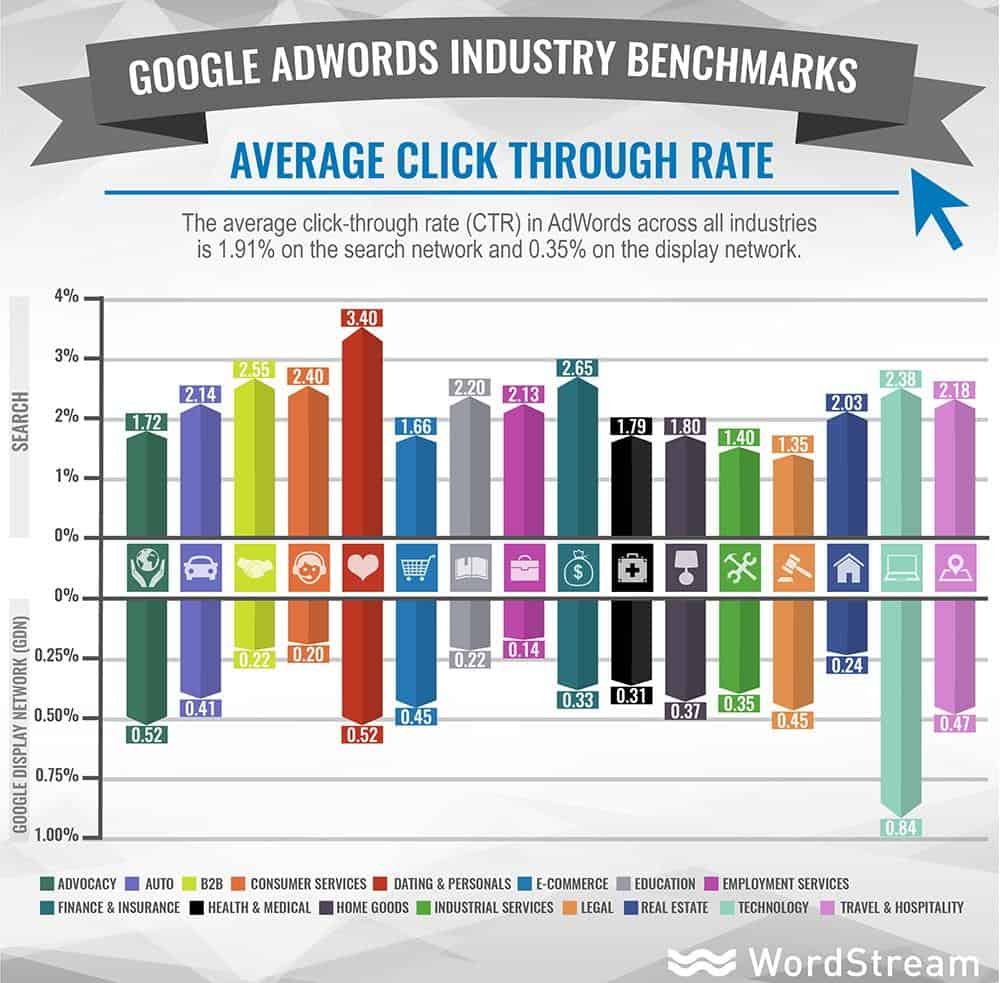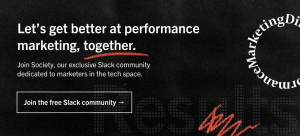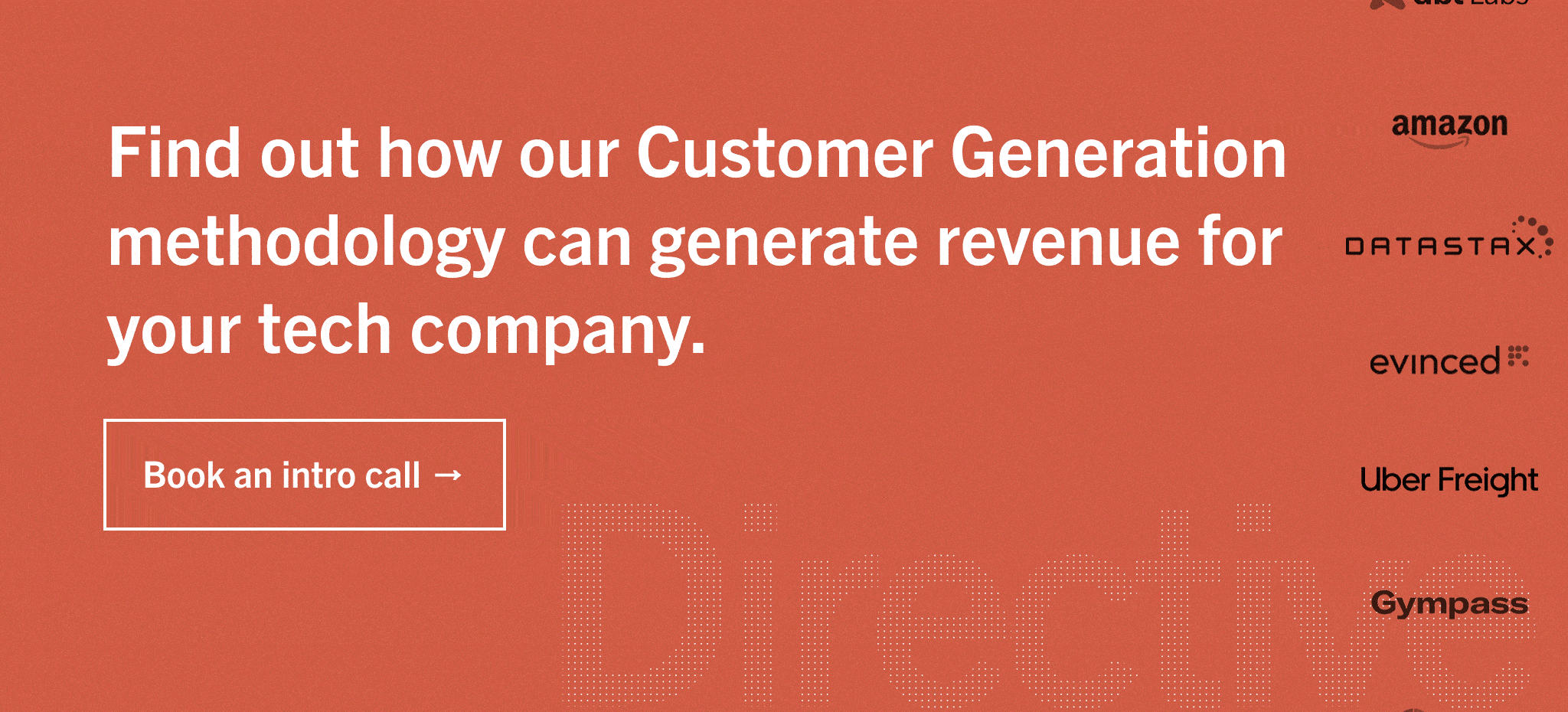What is Click Through Rate (CTR)?
Click-through rate (CTR) is a term used in digital marketing that refers to the percentage of people visiting a web page from an advertisement or organic search result.
Clicking on the advertisement sends them to a web page for that product or service. Click-through rate, then, measures how successful an ad has been in capturing a site visitor’s interest.
A high click-through rate indicates a successful ranking page on your website or ad in a Google SERP (search engine results page). This means that your website is generating more traffic per impressions on Google. A high click-through rate can also indicate increased conversions, depending on the user experience of the landing page.

What is a Good Click-Through Rate?
Today, people have become quite desensitized to ads. Between ad-blockers, firewalls, and just ignoring the thousands of ads that pop up each day, it’s a wonder that ads receive any attention at all.
A typical click-through rate could be about 2 site visitors per 1,000 impressions or 0.2%. This raises the question: what is a good click-through rate?
According to a recent study with Google AdWords, the research found that the average click-through rate for a search ad is 1.91%, and 0.25% for a display ad.
Search ads appear when an Internet user searches for a specific product on Google. These results can be found at the very top of a Google results page and show the closest ad matches for any search.
Display ads appear on a web page while an Internet user is browsing. These are usually banner ads found either at the top, on the side, or in the bottom corners of a page and are attributed by attention-grabbing images or text.
A helpful tip when analyzing click-through rate is to think about your Industry, the set of keywords and keyword phrases you’re bidding on, and the channel of the ad or webpage. Some channels, industries, and keyword-types have a higher click-through rate compared to others.

How Do You Calculate Click-Through Rate?
To calculate the click-through rate, take the number of times an ad or webpage is clicked on and divide it by the number of impressions it has. Once you have the number, take it and multiply it by 100 to get a percentage. The result is your click-through rate.
The equation is as follows:
CTR = Total Measured Clicks / Total Measured Ad Impressions (Views) x 100
Say an online advertisement has been clicked on 150 times after being viewed 3,000 times.
(150 clicks / 3,000 impressions) x 100% = 5% CTR

What Does a High or Low Click Through Rate Mean?
As a metric, the click-through rate tells you how relevant users are finding your ad or webpage to be. When creating an ad campaign, blog post, or core page on your website, you want it to not just be relevant, but eye-catching and enticing. This can come from the copy to the metadata.
High CTR
If you have a high CTR, it means that users are finding your ad or webpage to be engaging and highly relevant. With branded keywords, you may see a double-digit CTR. In some cases, click-through rates less than one percent on broad, non-branded keywords are not abnormal.
Low CTR
If you have a low CTR, it means your ad or webpage is not engaging or highly relevant enough for the user to pick. This can be due to bad copy, creative, or poor targeting.
Why is Click Through Rate Important?
Aside from indicating how relevant your ad, content, and webpages are to searchers, CTR also impacts ranking by search engines organically and in paid search.
Google’s ranking algorithm determines where your ad or webpage will show up on a search page. This impacts how many people will view and ultimately click and engage with your website. Click-through rate has a large influence on the well-being of your online business.
If you want to take your PPC efforts to the next level, you can count on our expert tech marketing team to get you there. We specialize in Customer Generation and have a proven track record of delivering exceptional results for our clients.
Book a call with us today to learn how you can gain a competitive edge in the world of PPC with Customer Generation.

